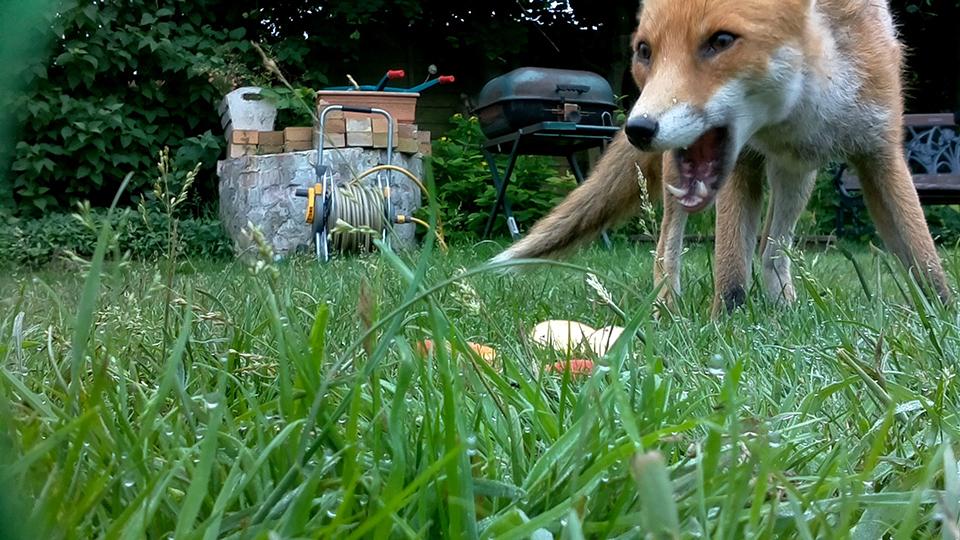Uncover your garden’s wildlife secrets with DIY tech
Primary page content
Design researchers have developed a DIY wildlife camera that anybody can make at home from everyday items and simple technology.

A camera installed in a volunteer's back garden captures a fox out in daytime. Photo: Leila Racaniere
The team from the Interaction Research Studio at Goldsmiths, University of London, and Design Products at the Royal College of Art designed the devices, which cost less than £30, to encourage people to find out more about the animals in their neighbourhood.
The My Naturewatch cameras use computer vision to sense motion and capture images of wildlife, much like the sophisticated camera traps used by conservationists and filmmakers. They automatically capture images when they ‘see’ animals such as birds, foxes, squirrels and mice. People can view the images and control the camera from the comfort of their homes by connecting to a Wi-Fi network set up by the cameras.
Easy-to-follow instructions for making the My Naturewatch cameras are available on the project website, www.mynaturewatch.net, along with free software and tips on housing the cameras in food storage containers, old plastic bottles or other household items. After testing the website and cameras at a number of nature reserves and schools, the team is confident people around the UK will find the cameras easy to make and fun to use.
The project is also trialling a system for tracking small garden birds using DIY RFID bird-feeders (‘freaders’). The freaders read IDs from tiny chips embedded in special versions of the rings commonly used to identify birds.
A number of robins on the Goldsmiths campus have already been tagged with electronic bird rings and the team are tracking the birds’ movements through the site. The plan is to eventually encourage enough people to build the freaders so that small garden birds can be tracked all over Britain – which the researchers expect to be engaging for the public as well as an invaluable source of information for scientists.
The freaders are simple, battery-powered devices that are easy to make from standard components housed in waterproof containers that can be attached to existing bird feeders. The freaders connect to people’s home Wi-Fi networks and automatically record identification numbers from birds that have been professionally tagged by licenced bird ringers. Once trials are complete step-by-step instructions for making the freaders will be released on www.mynaturewatch.net
Discover DIY devices to engage with nature at My Naturewatch